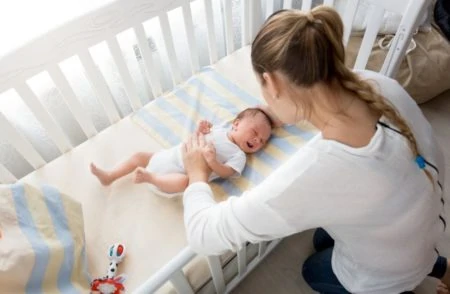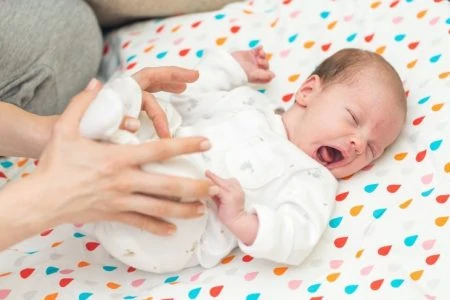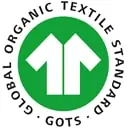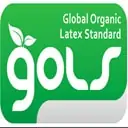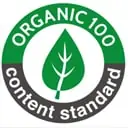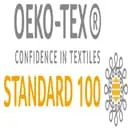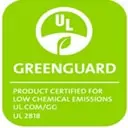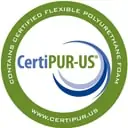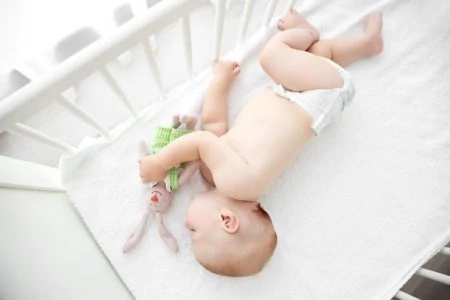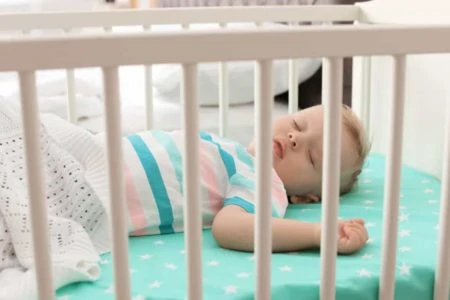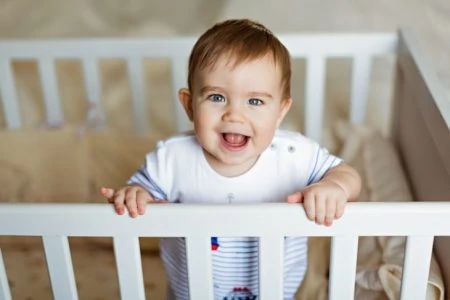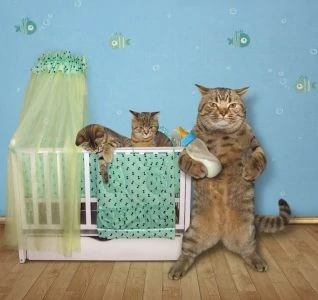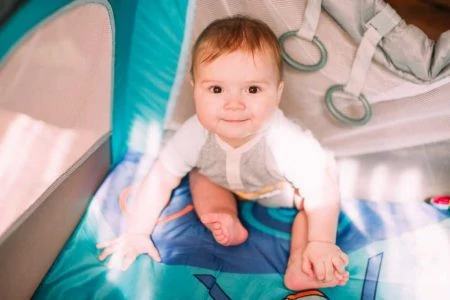Searching for an organic crib mattress should be simple, right? Unfortunately, it’s quickly becoming a minefield of buzzwords. You see “nontoxic” here, “eco-friendly” there, and “natural” everywhere.
Then you get hit with the alphabet soup of certifications: GreenGuard Gold, GOTS, GOLS, CertiPUR-US. It is enough to make any sleep-deprived parent’s head spin.
If you are feeling lost, don’t worry. We have dug deep into the science of crib mattress standards to separate the marketing fluff from the facts. We will break down exactly what those labels mean and help you navigate the confusing world of organic baby sleep.
Below, we explain the certifications that actually matter and share our top picks for the best organic crib mattresses based on safety, materials, and real-world durability.
- Breathable
- Waterproof coating
- Limited lifetime warranty
- GreenGuard Gold certified
- Durability proven and tested
- Easy to clean
- CertiPUR-US & GreenGuard certified
- Blended organic cotton cover
- Extremely lightweight
- GOTS and GreenGuard certified
- Can be used with a toddler bed
- Hypoallergenic
Natural vs. Organic: What Is the Difference?
Thanks to environmental groups and consumer advocates, we now know that many household products contain hidden chemicals. From fire retardants to pesticides, these additives are introduced during manufacturing. Unfortunately, baby products like crib mattresses are no exception.
While we don’t always know the long-term health impacts of every chemical, we do know they can “off-gas.” This affects your indoor air quality and can lead to eye, nose, and throat irritation for your little one (1).
In response, brands are flooding the market with “natural” and “organic” options. But here is the catch: the word “natural” is largely unregulated in the textile industry.
The FDA regulates “natural” for food, but that does not apply to mattresses. A company can slap a “natural” label on a crib mattress even if it’s packed with synthetic materials. Essentially, it is a marketing term, not a scientific one. So, when you see it, keep your guard up.
“Organic” is a different story, though still complex. There isn’t a single “100% organic” certification for entire mattresses because a mattress requires various components (coils, waterproofing, etc.). However, legitimate third-party certifications help you verify exactly what is inside.
These certifications analyze:
- Material Purity: The percentage of actual organic content.
- Chemical Safety: Which harsh chemicals are banned from the product.
- Sustainability: How the materials are sourced.
- Social Responsibility: The labor practices used during manufacturing.
We rely on these rigorous standards to ensure the mattresses we recommend are truly safer for your baby.
How to Choose an Organic Crib Mattress
Choosing an organic mattress is about more than just checking for a cotton logo. To ensure a safe sleeping environment, you need to weigh several factors.
Product Reviews
We tested, researched, and compared the top options to bring you these 5 standout organic crib mattresses.
Naturepedic Organic Coil Crib Mattress
Best Organic Coil Mattress
The Naturepedic Organic Coil mattress is a powerhouse in the organic market. It boasts GOTS and GreenGuard Gold certifications, assuring parents that it meets strict chemical emissions limits. The core features a 252-coil count for sturdy support, padded with GOTS-certified organic cotton batting rather than synthetic foams.
We love that Naturepedic avoids glues and adhesives, which are common sources of chemical off-gassing. The cover is made from organic cotton with a food-grade waterproof coating. It’s breathable enough to allow 360-degree air circulation while still creating an impermeable barrier against messes.
Durability is a major plus here. It includes a limited lifetime manufacturer’s warranty, which helps justify the higher price tag. However, keep in mind that quality components add weight. At over 22 pounds, changing the sheets on this bad boy is a two-person job (or a serious workout).
Pros
- GOTS and GreenGuard Gold certified.
- No polyurethane foam or toxic glues.
- Excellent firmness for safety.
- Limited lifetime warranty.
Cons
- Heavy (22+ lbs) and difficult to lift.
Our Ratings
Colgate Bassinet or Cradle Mattress
Best Organic Bassinet Mattress
Bassinets are convenient, but their mattresses are often flimsy. The Colgate bassinet mattress is a substantial upgrade for parents who want organic safety from day one. It fits standard oval bassinets and cradles (check your dimensions first!) and brings GreenGuard Gold certified materials to your baby’s first bed.
The waterproof backing is essential for the newborn stage, protecting the core from the inevitable spit-up and diaper leaks. We also appreciate that it meets rigorous government flammability standards without relying on harsh chemical retardants.
While it is labeled for bassinets, it feels substantial. However, at 11.2 pounds, it is surprisingly heavy for its small size. This speaks to the density and quality of the materials, but make sure your bassinet frame can support the extra weight.
Pros
- GreenGuard Gold certified.
- Waterproof backing makes cleaning easy.
- Firm and supportive for newborns.
- High-quality construction.
Cons
- Only fits oval-shaped sleep spaces (check dimensions!).
- Heavier than standard foam pads.
Our Ratings
LA Baby Foam Organic Crib Mattress
Best Affordable Organic Crib Mattress
If you want eco-friendly materials without breaking the bank, the LA Baby mattress is a solid contender. It uses soy-based foam, which substitutes some petroleum-based oils with renewable plant oils. This high-density foam is CertiPUR-US certified, meaning it has been tested for durability and low emissions.
It features a “blended” organic cotton cover. While this isn’t 100% GOTS organic, it offers a hypoallergenic surface that is gentle on sensitive skin. The cover is also waterproof and dust-mite resistant, a huge bonus for allergy prevention.
Weighing in at 13 pounds, it hits the sweet spot between flimsy and unliftable. It also features built-in air vents to keep the mattress fresh. Just note that it is a single-firmness mattress, so it doesn’t have a softer “toddler side” like some dual-stage options.
Pros
- Lightweight (13 lbs) and easy to handle.
- CertiPUR-US certified soy foam.
- Hypoallergenic, waterproof cover.
- More affordable price point.
Cons
- “Blended” organic cover, not 100% organic.
- Single firmness only.
Our Ratings
Colgate Eco-Classica Organic Crib Mattress
Best Organic Foam Crib Mattress
The Colgate Eco-Classica III stands out for its dual-firmness design. One side is ultra-firm for infants, while the flip side offers slightly more contouring comfort for toddlers. This extends the life of the mattress significantly.
It holds both CertiPUR-US and GreenGuard Gold certifications, ensuring low VOCs and safe foam manufacturing. The cover is made with certified organic cotton and backed by a waterproof barrier, protecting the core from accidents.
The best feature? It weighs just over 9 pounds. You can easily lift it with one hand while holding a clean sheet in the other. It’s also 6 inches thick, ensuring a tight, safe fit in standard cribs.
Pros
- Dual-sided: Firm for infants, softer for toddlers.
- Extremely lightweight (9 lbs).
- CertiPUR-US and GreenGuard Gold certified.
- Organic cotton cover with waterproof backing.
Cons
- Infant side is very firm (which is safe, but feels hard).
- Not fully organic throughout the core.
Our Ratings
Naturepedic Organic Crib Mattress
Best Organic Cotton Crib Mattress
Naturepedic strikes again with this seamless, cotton-core mattress. It is completely free of polyurethane foam, latex, vinyl, and flame retardants. Instead, it relies on GOTS-certified organic cotton for support and comfort.
The “seamless” design is a brilliant feature for hygiene. Without sewn seams along the edges, there are no crevices for bacteria, crumbs, or moisture to hide. The surface is waterproofed with food-grade polyethylene derived from non-GMO sugarcane, making it easy to wipe clean.
It is lightweight and fits most toddler beds, giving it longevity. However, because it lacks coils or high-density foam, some parents find that the cotton fill can compress slightly over years of heavy use.
Pros
- GOTS and GreenGuard certified.
- Seamless waterproof edges prevent bacteria buildup.
- No foam, latex, or springs, pure cotton core.
- Ideal for allergy sufferers.
Cons
- Cotton fill may compress or indent over time.
Our Ratings
Organic Certifications Decoded
Mattress labels are covered in badges and logos. Some measure chemical emissions, while others verify organic farming practices. Here is a quick breakdown of what they actually mean.
FAQs
The Bottom Line
Navigating the world of crib mattresses can feel overwhelming, but focusing on certifications helps cut through the noise. Whether you choose a coil mattress like the Naturepedic Organic or a dual-firmness foam option like the Colgate Eco-Classica, prioritizing GreenGuard Gold and GOTS labels ensures a safer sleep space.
Trust your gut, check the fit in your crib, and rest easy knowing your baby is sleeping on clean, safe materials. You’ve got this!
